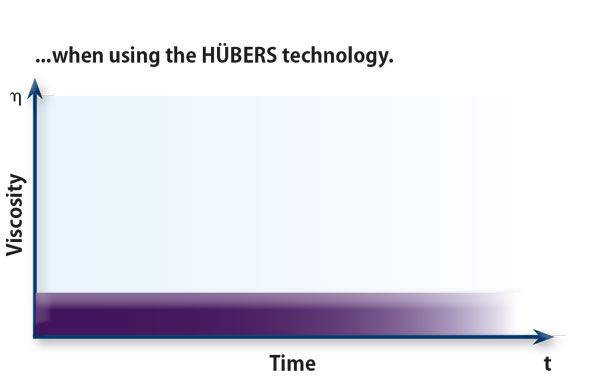The production of the reactive mix is a decisive step in the process chain in many respects:
Exact adherence to the mixing ratio and the mixture quality have an important effect on the product quality. In case of sensitive products, even the smallest deviations in the mixing ratio as well as the smallest defects in the homogeneity of the mixture can lead to reject production.
The mixture is reactive, that means
… it must be used productively, otherwise the material brought in is wasted.
… the viscosity increases exponentially, any delay in further processing leads to deterioration of the mechanical and electrical properties of the produced components.
Instead of producing the reactive mix in batches, HÜBERS systems therefore rely on controlled mixing of the material components in the smallest required quantity immediately before processing the mix. We achieve this through the interaction of our pump and drive technology with our static mixer.
In addition to exact adherence and reliable reproducibility of mixing parameters, HÜBERS technology for dosing and mixing offers significant advantages for production management and productivity:
- continuous operation possible, no interruptions due to preparation of new material batches
- immediate start of production at the start of a shift; production can be resumed easily after interruptions
- shorter cycle times possible due to higher processing temperature of the casting material
- no sedimentation problems
Component Flushing Valve
Directly in front of the static mixer is the patented HÜBERS component flushing valve, which closes the hardener side to flush the mixer with the resin component. During flushing, the valve prevents hardener from entering the mixing channels.
The flushing valve is also used for material systems with components other than resin and hardener, e.g. liquid silicones. The properties of the system determine which component is used for flushing.
The static mixer is cleaned quickly and reliably solvent-free with the smalles possible amount of material. In this way, no plugs or deposits can form.




